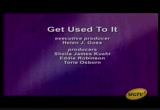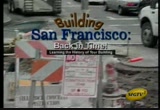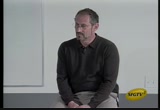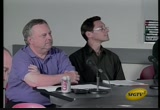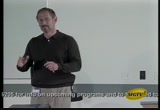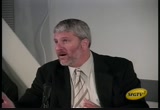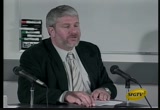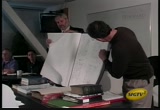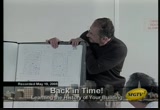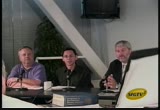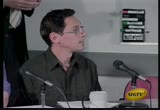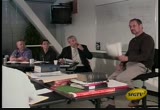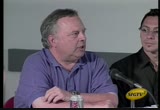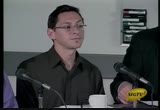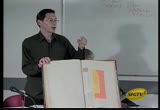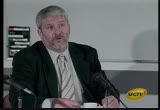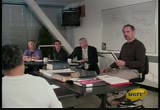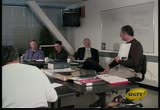tv [untitled] September 21, 2010 10:00am-10:30am PST
11:00 am
[beeping] voice: ready. ready. ready. ready. ready. announcer: it can be a little awkward when your friend tells you he's been diagnosed with a mental illness, but what's even more awkward is, if you're not there for him, he's less likely to recover. i'm here to help, man, whatever it takes. voice: ready.
11:02 am
today. what is today. it's may 19, third thursdays we always do a department building inspection. brown bag. subjects brought up by you and people that come and that we think we can help provide the information. today we are doing some thin we've done twice before. learning the history of your building. it's a popular topic in terms of doing something in a building in san francisco as far as adding a unit or selling your building that's useful to know when the building was built and how it was legally or otherwise altered without or with permits so we have with us today three people. just scratching the surface of the available resources in san
11:03 am
francisco about persons who know about historical buildings and jeremy paul permit consul stapt that does a lot of work trying to help people try and solve permit issues, many of which relate to learning the legal issues of their building and sorting out the records and, the survey coordinator for the planning department and historic research surveying is becoming more and more important and just recently we got a substantial cash settlement from a problem that took place at the moratorium that will be surveying and i don't think that's going through the planning department but the survey resources are so important and that's the settlement of a lawsuit is
11:04 am
let's do more surveying. alan, right side is records management, arad yen cussad yen manager of records the department of building commission ran out of space so we moved into offices next door as well so room 303 has files and files of microfiche, cards that have been here since after the 1906 earthquake. the regards prior to that were mostly destroyed in the fire following the earthquake. i just got a call from someone from berkley with millions of pages of copies of plans of san
11:05 am
francisco buildings. millions of sheets that somehow got rescued in the 1906 earthquake. part of what we're doing in the building and planning department is how to assemble the records and your about to see they're not in one place. the biggest lesson you'll find is your challenge is to go to all of these agencies and get a set of records for your building. right now your assembling a program to do a single records management program to dial up on the computer your address and get the historical data. right now we can do that for a very short timeframe so if you go to,sfgov dot org. the cities website you can go to the beldings department
11:06 am
link, hi alice, and go to permits. it says check on-line permit status and it's a permit tracking function and you can enter your address and i think all the permits since the mid 80's now will come up with their disposition and what happens, who reviewed them and all of that. that's the first step. that's as we were rushing headlong into the 90's and we're trying to move into the next decade and right now negotiating some vendor to scan these and put them all underseparate addresses. okay where do we go from here. >> right now you can do that yes. >> but it's not on going? >> we're going to increase it. we've initiated that about three to five months back. if you have a permit in for review you can check the status
11:07 am
and see who has it and who is the next plan station and if it's prepared for issuing and you feel free to jump in. >> what's on-line is the same we have in our lobby the permit tracking system. applications from about mid 80's to whatevers today issued and that's information you get. it's not the actual copies of documents but the computer indexing the central department does when they accept permits. from the same link at,sfgov, you can get to thesf viewer program that can give you assessors information about what the asses or knows and also links to map's and ariel
11:08 am
photos which can be useful in various stages. you know i think in order to talk about these records that we're launching into, i think it's a good idea to put into perspective why we look at our records. this is a good thing for me to go off on. that, speaking in the residential field especially, because that's where i do most of my work. the way the building department and planning departments view changes that you might propose, including legalization of existing features you take for granted as existing is all documenting how it got to be the way it is. it's important to think about these building records as being a record of actions, not necessarily of things.
11:09 am
so, quite often the best place to start is when did the building get built and what was it when it was built? how large was it, what was it's function and different uses there? once you established it's original use and original configuration, then you have a marker by which to track changes through the history of the building and that's where you'll find yourself going through many of the different resources that the chief inspector has laid out that we'll talk about today. >> i'm a very product oriented person. one reason i like being a building inspector unlike planning looking in the future, you look at a plan, approve it and the thing getsibility. i like things in discreet little bits. my recommendation for that
11:10 am
concept of myself is everybody for their house should have a notebook and in this, you should start to insert the records for your building. keep them all in one place in those acid free slip cases and that way you have a product and you can begin chronologically. when i upgrade my house i felt an electrical permit in the wall. i slid it in there it's kind of yellow, but it's useful if i ever have to say yes this work was done legally in 1932. the city does not retape that. so we want to keep hard copy. forget the electronic stuff. >> can we get those on-line?
11:11 am
>> map's are available on-line through subscription by various libraries through the sand born map company. the san francisco library for a period of one year had a trial subscription and the use did not justify the cost so they suspended and the public demand to return that may occur again. >> what is sand born. >> the short answer is, no. sand born was a mapping company that was part of a fire insurance program that went around cities all over the united states and maybe beyond and actually, physically, mapped by hand every building, hold that up for me -- every building and every out building and set of stairs and updated these map's on an annual basis
11:12 am
walking around the city and unfortunately someone had the mistakes of canceling the subscription ten or twelve years back but we have these historical map's and their fantastic in many ways. they don't give you a full history of the building but at the snapshot, i think this was in the 40s. you can look that building and actually see, if you look carefully, you can see the number of floors. two floors with an addition in the back and a bunch of an abbreviationses and the big key in front of the thing and the one with the little stairs. so how is that important to you. san francisco has amendment to the code that says if you have a stairs and a deck on your back porch and you want to replace them you can replace
11:13 am
them in their original configuration if they were properlyibility in the first place. how can you prove they were? in many cases that's hard to prove. but here it is this shows exactly where the shaping configuration of the stairs is. so we have a set of the most current inborn or sand born map's behind the planning department counter that will be happy to make or let you look at them and make copies of them there's a free copy machine. i've seen the old ones. not in the last year or two, do you know where they are? >> the series four books are on the sixth floor of the san francisco public library and early series are micro film also from the library. if you belong to a library in
11:14 am
another jurisdiction like san jose or oakland they might have subscriptions for their area and that might extend -- they have maybe all california map's. >> do you know where the ariel services are and where. >> the planning department has three that are as of yet unconserved. >> what does that mean. >> we have not had the time or resources to digitize them. they're very large. more than this book here. they're about 32 inches square and cover the whole city in 1948 to 1950, somewhere in the mid 50s or 60's. >> to go on the resources that are available to us there's aerial photography that goes back to the -- actually pre
11:15 am
first world war and they're amazing and held by pacific ariel survey off,,hagen burger road by the airport. what they did in the early era is they had a large format cameras that they went with the originals over the city and did long exposure photos with very high resolution lenses so when you want to find something in the archives, they'll give you aqua drant go to and a loop and you can't see much resolution but they will blow it up for you and the resolution will be so high you will be able to determine the make of many of the autos you see on the street. in the teens and 20s. >> so let's go back to
11:16 am
learning history of your building to find out when was your buildingibility and who built it. what do you think moses? >> for the newer buildings i believe their data base comes from building permit records. >> how do people access that. >> sfgov dot org. you're going to tell he is a historicle person. for newer buildings after the 06 earthquake. you mean the 89? >> one of the greatest faults with the assessors data base is they make up date for builds that pre existing 1906. their records are not fully accurate for buildings after that but i think their 90
11:17 am
percent correct for after 06 so if there was building that was surviving when i started shop again in later 06 they said it was in the 1900's. could be from 1850s but they said 1900. so that's kind of how you know it's pre 06 and that's all you can do. >> power of bureaucrat. >> this is a remarkable thing the assessors records. first of all you can't get a copy of this unless your the owner or the owners agent. but it's remarkable because there were field inspections done of almost every building in san francisco and it contains photographs of those buildings and it's a terrific, counted sinks and rooms and bathrooms. a tremendous resource.
11:18 am
in addition to finding out from the assessors recores probably the place i would start is an original permit building for a building after 1906. here's a building permit and you can get these by filling out one of those little forms we have over there. micro film records request. right, alan? and you take it to the accounter and say, here's what i would say -- i want to see every record available for my building including the permits, the plans, the job cards because that's where the inspectors sign off on and what else do we have over there. >> well, basically we have building permit applications or
11:19 am
job cards or jobs done by district inspectors department to say it's final or not finaled with an expired job card and, plumbing, electrical permits. >> how come -- i thought we didn't. >> we do have some and miscallaneous documents and letters where people sent to the city and documents tham come through another department before us. now, what we don't have and we have building plans let me say buildings -- most wood frame houses residentials don't have plans in my recollection but commercial buildings almost always there's some plan, if there's a multi unit large residential building will have plans? >> well, i was going to say
11:20 am
what we don't have, inspection records, job cards, we have from about 1933 going forward, plumbing permits and inspections from about 1976 going forward and electrical permits from about 1985 going forward so just as mr. corn field said if you find a tag or something on your circuit breaker box or something and it's old. with a straight edge or something take it off and save it. it may be the only record that something was done at that time. >> yeah, you had a question? >> you have permits for modifications. >> the question is do you make a request for documents and nothing turns up which happens frequently, maybe. where else would we look?
11:21 am
where else would we look for the documents. >> the planning has historic files similar to what was said about the inner office between various city departments and ours have not been micro films. they're still in paper files so we have the originals. they're from about the mid 30s, um... forward. so if like the planning department approached the owners concerned something at that site, we would have our copy of that up there. >> here you go. block book has a notice in it. >> down on the bottom floor of the planning floor at 1660, we have block books that are another source of research. >> this is book number ten.
11:22 am
volume ten and right down on the first floor you can see them. there's a huge selection. must be 75 or a hundred for covering the whole city. >> we've got them from 1935, 46, 54 and current ones that are up to 2004. i think they've been updated. in the older sets in the 1935. with a lot the owner of record. also in a color wash is the zoning that existed for that time. pasted in are zoning changes that happened various lots during the 30s and the 1940s when the next set was issued and there are little pencilled in notes, sometimes with permit
11:23 am
numbers written in. especially valuable for billboards noted in the books. we will have the build board permit number written on top of the lot. if there was a variance decision or a zoning decision. >> like a notice of special restriction. >> like from the 1930s i've seen, like the parking for this buildings to be located at this other building because they were under the same ownership at some time. those sort of restrictions that are also suppose to be recorded against the deeds at the assessors reporting office would be also here if if it was a case of some decision. >> some other things you need to know, the dimensions of your
11:24 am
lot. 100 by 25 on this side of the street. it does not have the official addresses and all of us will talk about that in a second but it has a great deal of pencilled in information. notes from the planner and fantasticly valuable so find the old block books and use our free copy machine and make a copy of the page. how can you make sure it's the right building. this is the cities official address street from block 2129 which is,pachako, 2029, and this is maintained by the first floor on this building and this has the official address of the city. the date the address was issued and maybe the date the address was changed and other alternate
11:25 am
addresses we may initially applied to the building. when you look for the history of your building not only do you look at every address it might have been called by. example you might ask for both streets it intersects and always reference block 21, 29 block or block 1f. we're referencing blocks and addresses are nothing but trouble. people make them up. they come and go. 1125 abc. we have tremendous problems so use blocks primarily. >> in addition to map's there's other resources showing
11:26 am
characteristics of lots that are very valuable resources. that's title companies. your title companies the major ones in san francisco, all have original copies of the assessors block map's and changes to those individual blocks which include lot line adjustments and ease meants that often make all the difference in whether another city agency will accept something or agree to a change in that thing. with the -- after the earthquake there was -- and the fires -- many of those records were destroyed in the system and city. the entire ownership was gone. nobody had any records of who owned what. it was all people saying, this lots always been in my family so the board of supervisors
11:27 am
after the earthquake and fire created a function to allow ownership to continue. it was could a, makanearny, which claims ownership as a traditional right over a certain parcel and those are fascinating and historic documents when you come across them. >> so, learning history go to the assessor office in city hall or a title company and have them search for all the documents recorded against your property and if you're city hall you look at adjourning propertys so see if they have east meants or ease meants. if on page 29 you see a notice
11:28 am
of special restrictions under the planning code and we would ask you record it and it would be on file that assessors recording office and you can look it up and print this off and you would be surprised and who has the rights to drill on your backyard or exit across your front yard there are many, easements. >> i would like to add when the as see sore is taxing you on what's physically out there and not what's legally out there, many people come to us and say i have this apartment and this room in the basement -- they get the history of their building from our records management department and say say, there is nothing in the building department that says build this but i'm being taxed on it and again, that's more money for the city because it's
11:29 am
more square foot age and they tax you on what's physically out there. >> on page 22 of the hand-out you have is a certificate of final completion and occupancy. when a buildings put up we currently have and for many years up to -- when to the 50s maybe? >> in 1945 they issued those but unfortunately for every job that was ever done site may say reroofing and give you a,cfc, but it does not say one family or two family, just describes the job and in the 1950s it was five years later that it said only for conditions in the building code. >> so if you -- this document is the key document for us to determine what is the legal use and
77 Views
IN COLLECTIONS
SFGTV2: San Francisco Government Television Television Archive
Television Archive  Television Archive News Search Service
Television Archive News Search Service 
Uploaded by TV Archive on

 Live Music Archive
Live Music Archive Librivox Free Audio
Librivox Free Audio Metropolitan Museum
Metropolitan Museum Cleveland Museum of Art
Cleveland Museum of Art Internet Arcade
Internet Arcade Console Living Room
Console Living Room Books to Borrow
Books to Borrow Open Library
Open Library TV News
TV News Understanding 9/11
Understanding 9/11